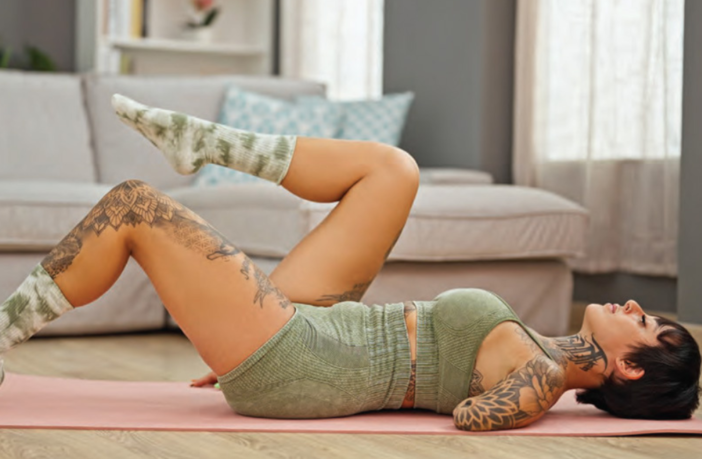By Jeff Haden
A hard-charging, success-focused friend clicked off the same morning routine every workday for nearly two years. Alarm at 5:15 a.m. Grab a bowl of apple slices and blueberries placed in the refrigerator the night before. Chug a 16-ounce bottle of water. Warm up and stretch for five minutes. Hop on his Peloton by 5:30 a.m. for at least a 30-minute ride.
Then a pedal on the bike broke. He ordered parts and waited. And his morning routine started to fall apart. His bike didn’t work so he couldn’t exercise. He couldn’t exercise so he stopped getting up as early. He wasn’t going to exercise, so why eat apples and blueberries first thing? He stopped drinking a bottle of water.
The improvement ripple effect—focusing on improving one thing, no matter how small, naturally leads to improvements in other areas—turned into the opposite.
And his entire routine fell apart. Routines are often critical to success. Breaking a goal down into daily activities and then consistently performing those activities, day in and day out? That’s how successful people accomplish huge goals. Routines are great.
Until something disrupts that routine—especially since the more rigidly you follow a routine, the more likely a single broken link will disrupt the entire chain. How can you keep that from happening? The key is to turn a routine into a practice.
Routines Versus Practices
What’s the difference in a routine and a practice? Riding your Peloton every day at 5:30 a.m. is a routine. Exercising every day is a practice. Eating apple slices and blueberries before you work out is a habit-stacked routine. Eating healthy is a practice. Holding an all-hands Zoom call every day at 9 a.m. is a routine. Regularly checking in with employees to see if they need help, or guidance, or a quick word of encouragement is a practice. Routines are what you do. Practices are what you do too, but, more important, they are who you are.
Your bike breaks? If exercise is a practice, you’ll spend those 30 minutes doing bodyweight exercises. Or a few HIIT workouts. Or going for a jog. While the bike may have been your preferred option, you can still exercise.
As Ryan Holiday writes:
“The difference is in the flexibility. One is about daily rhythm. The other is a lifelong pursuit. One can be ruined by something as simple as hitting the snooze button one too many times or getting called into work unexpectedly. The other can adapt accordingly. One (a routine) is something you made up. The other (a practice) is something you do.”
When something happens to mess up your routine, don’t dwell on the what. Think about the why. Focus on the goal your routine helps you achieve. And then just achieve that goal, this time, in a different way.
Never lose sight of the fact that every element in a routine is goal-driven—if not, why is it part of your routine?—and there are a variety of different ways to achieve a goal. To eat healthy. To check in with employees. To monitor performance. To get customer feedback. To do almost anything.
No matter how important, no matter how regimented, no matter how carefully constructed, routines are not who you are. Routines are simply what you do—what you choose to do. A kink in your routine cannot change who you are, and, more important, who you hope to become. Unless you let it.
Jeff Haden is a keynote speaker, ghostwriter, LinkedIn Top Voice, contributing editor to Inc., and the author of The Motivation Myth: How High Achievers Really Set Themselves Up to Win.
Explore more articles for the Women Community here.



